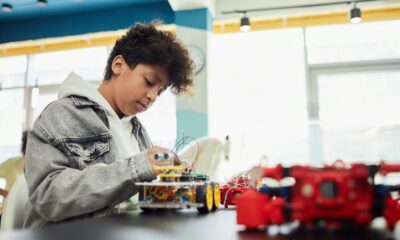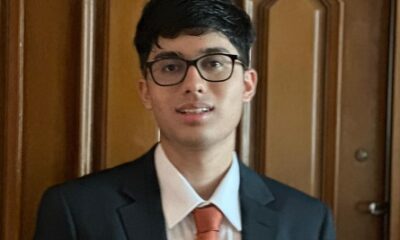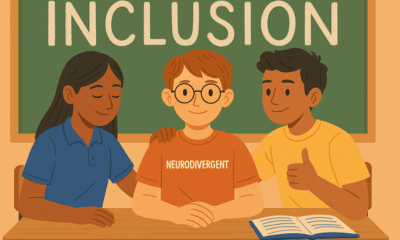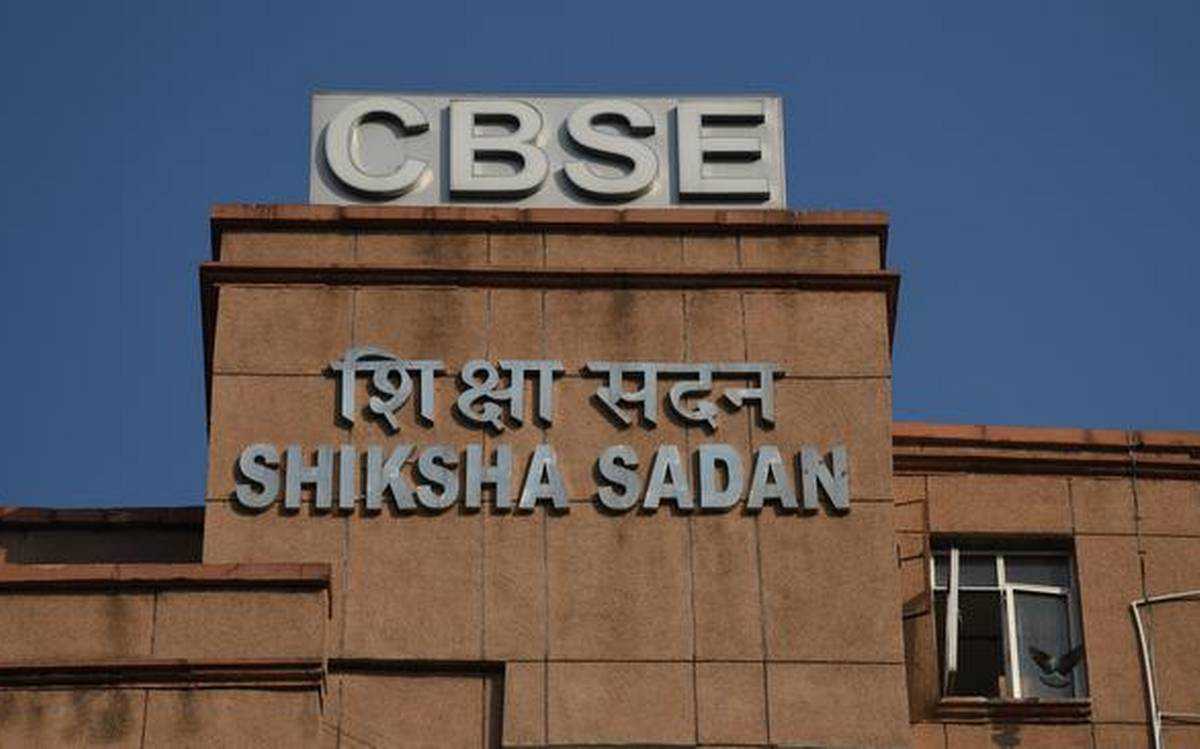Education
The lunacy and the uniqueness of English is what piques our interest to keep learning this language!
The English language is a little daunting to learn for people who are learning it for the first time. You can be sure even in a lifetime it would be pretty impossible to learn all of its intricacies. But the lunacy and the uniqueness of it is what piques our interest to keep learning this language.
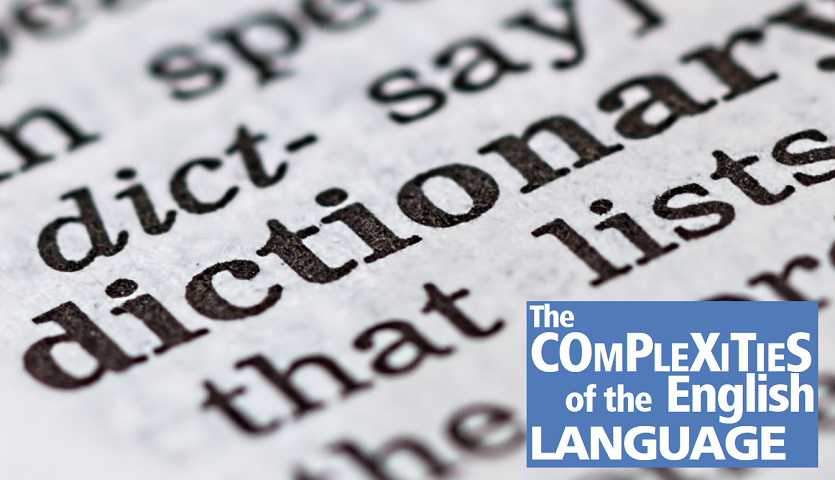
We should be grateful that we have been introduced to the English language from an early age. One of the most widely spoken languages in the world is a bit of a muddle, from the pronunciations, accents, word meanings and their spellings. Once the basics are in place then it’s a breeze to comprehend this language. Well almost. Most middle class families in India want their kids to be educated in an English medium school, so they have the liberty and ease to explore the world at a later time and date without having too much of a constraint on language, as most of the world knows the language English and even if they don’t know it fluently a fair amount of knowledge is present.
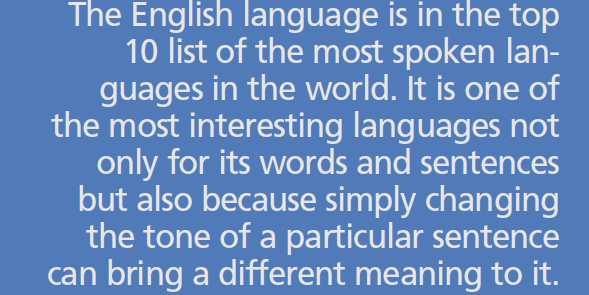
HISTORY OF ENGLISH
English was first brought to Britain in the mid-5th and 7th centuries AD with the arrival of three Germanic tribes who invaded Britain. The Tribes being The Angles, The Saxons and the Jutes. Before this invasion, Britain spoke a Celtic language. The Angles came from “Englaland” and their language was called “Englisc”, and it is from this that the words “England” and “English” were derived.
Old English
Old English doesn’t sound like the language we speak today. Even their alphabet was different. But the most common words used in modern English have roots from the language of this era. For eg. Words like be, strong and water were derived from old English. This dialect was spoken from 400 AD till about 1100 AD.
Middle English
The Duke of Normandy, William the Conqueror in 1066 invaded and conquered England. With them ruling Britain they brought in a type of French that became the language of the Royal Court, the ruling and the business classes. There was a language barrier during this time where the lower classes spoke English and the upper classes spoke French. By the 14th century English became dominant in Britain again but with the addition of many French words. This dialect came to be known as Middle English. It was the language of the great poet Chaucer. It remained present from 1100 AD to 1500 AD.
Early Modern English
By the end of the era of Middle English there was a change in pronunciation. From 1500 AD – 1800 AD the Early Modern English came into being as the British had connections with people from all over the World. Vowels were pronounced shorter and shorter. This meant that many new words and phrases entered the language. And with the invention of printing there came about a standard for spelling and grammar. Hence the first dictionary was printed in the year 1604. This English existed from 1500- 1800 AD.
Late Modern English
Since the British Empire at its height covered one quarter of the earth’s surface, the English embraced foreign words from many countries into its own. The late Modern English has many more words due to the Industrial Revolution and the emergence of technology for which new words were created. This was spoken from the 1800’s to present.
When we study a language, say our mother tongue we find it extremely simple. That’s because we have learnt it growing up and is wired in our brains. Learning a new language takes getting used to. English is such a vast language which is complex due to the use of certain words, phrases and their spellings used in different contexts.
Some interesting examples of the language complexities are:
There are Homonyms, same sounding words with different meanings and spellings eg: rise and rice. Synonyms a substitute word for another word, eg: shut and close have the same meanings. Antonyms are opposites of the word, eg: the opposite of tall is short. These are just a few. We also have the different tenses, singular and plural, masculine and feminine, etc.
If you have a rough cough, climbing can be tough when going through the bough on a tree!
And did you know that there is no ham in hamburger and no egg in eggplant (brinjal) or that English muffins were not invented in England, or the French fry was not invented in France.
Then there are paradoxes, where we say that quicksand works slowly and the guinea pig is not from a guinea or from a pig. A boxing ring is square then why is it called a ring? Have you heard that noses run when you have a cold and that your feet can stink?
Did you ever have a feeling that the English language was out to test you or get you? It makes us rack our brains to be sure that we don’t make errors in the usage of words and their spellings. Why are there same sounding words in the first place? Why can’t different words have different spellings? Why do some words have letters in them that are not even used when pronouncing it?

Their, there and they’re three words with the same pronunciation but different usage. Where, were and wear again the same thing. Boggles your mind every time doesn’t it? No matter how well versed we are with the language all of us at some point or the other have committed the error of using these words in our sentences.
Don’t get me started on the words that use silent letters of the English alphabet. I’m sure that you’ll are also asking the same question “If it’s silent then why is it there?” The history of the English language says that it used to be phonemic (yup, that’s right got to learn a new word). Meaning the words looked and sounded the same. Over time pronunciation changed and since the words were already preserved by the printing press some of the letters became silent.
Only 40% of modern day English is phonemic! Words like write, knee, wrist, psychology, daughter, half, all have silent letters. You might dread spelling, but it becomes very important in learning this language. What if you wanted to look up the word knowledge in the dictionary and you didn’t know the spelling. You’d probably look under the letter ‘N’.
Silent letters are not there to confuse us, even though we think so. There are certain rules that explain which letters are supposed to be silent, before and after certain letters. Once we start practising these rules it’ll become easier to remember how the words need to be pronounced and will undoubtedly improve our speaking, spelling and writing skills.
Learning the origins of words known as ‘Etymology’ is also very interesting. It is very fascinating as it provides the history of the words.
There is a magic ‘e’ in words. If you add an ‘e’ at the end of words with short vowel sounds, it elongates the sound of the vowels, eg: tap/tape, con/cone, mat/mate and fin/fine. Pretty cool right?
Try reading aloud the poem by Gerard Nolst Trenité – The Chaos (1922)
Dearest creature in creation
Studying English pronunciation,
I will teach you in my verse
Sounds like corpse, corps, horse and worse.
I will keep you, Susy, busy,
Make your head with heat grow dizzy;
Tear in eye, your dress you'll tear;
Queer, fair seer, hear my prayer.
Pray, console your loving poet,
Make my coat look new, dear, sew it!
Just compare heart, hear and heard,
Dies and diet, lord and word.
Sword and sward, retain and Britain
(Mind the latter how it's written).
Made has not the sound of bade,
Say-said, pay-paid, laid but plaid.
Now I surely will not plague you
With such words as vague and ague,
But be careful how you speak,
Say: gush, bush, steak, streak, break, bleak ,
Previous, precious, fuchsia, via
Recipe, pipe, studding-sail, choir;
Woven, oven, how and low,
Script, receipt, shoe, poem, toe.
Say, expecting fraud and trickery:
Daughter, laughter and Terpsichore,
Branch, ranch, measles, topsails, aisles,
Missiles, similes, reviles.
Wholly, holly, signal, signing,
Same, examining, but mining,
Scholar, vicar, and cigar,
Solar, mica, war and far.
From "desire": desirable-admirable from "admire",
Lumber, plumber, bier, but brier,
Topsham, brougham, renown, but known,
Knowledge, done, lone, gone, none, tone,
One, anemone, Balmoral,
Kitchen, lichen, laundry, laurel.
Gertrude, German, wind and wind,
Beau, kind, kindred, queue, mankind,
Tortoise, turquoise, chamois-leather,
Reading, Reading, heathen, heather.
This phonetic labyrinth
Gives moss, gross, brook, brooch, ninth, plinth.
Have you ever yet endeavoured
To pronounce revered and severed,
Demon, lemon, ghoul, foul, soul,
Peter, petrol and patrol?
Billet does not end like ballet;
Bouquet, wallet, mallet, chalet.
Blood and flood are not like food,
Nor is mould like should and would.
Banquet is not nearly parquet,
Which exactly rhymes with khaki.
Discount, viscount, load and broad,
Toward, to forward, to reward,
Ricocheted and crocheting, croquet?
Right! Your pronunciation's OK.
Rounded, wounded, grieve and sieve,
Friend and fiend, alive and live.
Is your r correct in higher?
Keats asserts it rhymes Thalia.
Hugh, but hug, and hood, but hoot,
Buoyant, minute, but minute.
Say abscission with precision,
Now: position and transition;
Would it tally with my rhyme
If I mentioned paradigm?
Twopence, threepence, tease are easy,
But cease, crease, grease and greasy?
Cornice, nice, valise, revise,
Rabies, but lullabies.
Of such puzzling words as nauseous,
Rhyming well with cautious, tortious,
You'll envelop lists, I hope,
In a linen envelope.
Would you like some more? You'll have it!
Affidavit, David, davit.
To abjure, to perjure. Sheik
Does not sound like Czech but ache.
Liberty, library, heave and heaven,
Rachel, loch, moustache, eleven.
We say hallowed, but allowed,
People, leopard, towed but vowed.
Mark the difference, moreover,
Between mover, plover, Dover.
Leeches, breeches, wise, precise,
Chalice, but police and lice,
Camel, constable, unstable,
Principle, disciple, label.
Petal, penal, and canal,
Wait, surmise, plait, promise, pal,
Suit, suite, ruin. Circuit, conduit
Rhyme with "shirk it" and "beyond it",
But it is not hard to tell
Why it's pall, mall, but Pall Mall.
Muscle, muscular, gaol, iron,
Timber, climber, bullion, lion,
Worm and storm, chaise, chaos, chair,
Senator, spectator, mayor,
Ivy, privy, famous; clamour
Has the a of drachm and hammer.
Pussy, hussy and possess,
Desert, but desert, address.
Golf, wolf, countenance, lieutenants
Hoist in lieu of flags left pennants.
Courier, courtier, tomb, bomb, comb,
Cow, but Cowper, some and home.
"Solder, soldier! Blood is thicker",
Quoth he, "than liqueur or liquor",
Making, it is sad but true,
In bravado, much ado.
Stranger does not rhyme with anger,
Neither does devour with clangour.
Pilot, pivot, gaunt, but aunt,
Font, front, wont, want, grand and grant.
Arsenic, specific, scenic,
Relic, rhetoric, hygienic.
Gooseberry, goose, and close, but close,
Paradise, rise, rose, and dose.
Say inveigh, neigh, but inveigle,
Make the latter rhyme with eagle.
Mind! Meandering but mean,
Valentine and magazine.
And I bet you, dear, a penny,
You say mani-(fold) like many,
Which is wrong. Say rapier, pier,
Tier (one who ties), but tier.
Arch, archangel; pray, does erring
Rhyme with herring or with stirring?
Prison, bison, treasure trove,
Treason, hover, cover, cove,
Perseverance, severance. Ribald
Rhymes (but piebald doesn't) with nibbled.
Phaeton, paean, gnat, ghat, gnaw,
Lien, psychic, shone, bone, pshaw.
Don't be down, my own, but rough it,
And distinguish buffet, buffet;
Brood, stood, roof, rook, school, wool, boon,
Worcester, Boleyn, to impugn.
Say in sounds correct and sterling
Hearse, hear, hearken, year and yearling.
Evil, devil, mezzotint,
Mind the z! (A gentle hint.)
Now you need not pay attention
To such sounds as I don't mention,
Sounds like pores, pause, pours and paws,
Rhyming with the pronoun yours;
Nor are proper names included,
Though I often heard, as you did,
Funny rhymes to unicorn,
Yes, you know them, Vaughan and Strachan.
No, my maiden, coy and comely,
I don't want to speak of Cholmondeley.
No. Yet Froude compared with proud
Is no better than McLeod.
But mind trivial and vial,
Tripod, menial, denial,
Troll and trolley, realm and ream,
Schedule, mischief, schism, and scheme.
Argil, gill, Argyll, gill. Surely
May be made to rhyme with Raleigh,
But you're not supposed to say
Piquet rhymes with sobriquet.
Had this invalid invalid
Worthless documents? How pallid,
How uncouth he, couchant, looked,
When for Portsmouth I had booked!
Zeus, Thebes, Thales, Aphrodite,
Paramour, enamoured, flighty,
Episodes, antipodes,
Acquiesce, and obsequies.
Please don't monkey with the geyser,
Don't peel 'taters with my razor,
Rather say in accents pure:
Nature, stature and mature.
Pious, impious, limb, climb, glumly,
Worsted, worsted, crumbly, dumbly,
Conquer, conquest, vase, phase, fan,
Wan, sedan and artisan.
The th will surely trouble you
More than r, ch or w.
Say then these phonetic gems:
Thomas, thyme, Theresa, Thames.
Thompson, Chatham, Waltham, Streatham,
There are more but I forget 'em-
Wait! I've got it: Anthony,
Lighten your anxiety.
The archaic word albeit
Does not rhyme with eight-you see it;
With and forthwith, one has voice,
One has not, you make your choice.
Shoes, goes, does *. Now first say: finger;
Then say: singer, ginger, linger.
Real, zeal, mauve, gauze and gauge,
Marriage, foliage, mirage, age,
Hero, heron, query, very,
Parry, tarry fury, bury,
Dost, lost, post, and doth, cloth, loth,
Job, Job, blossom, bosom, oath.
Faugh, oppugnant, keen oppugners,
Bowing, bowing, banjo-tuners
Holm you know, but noes, canoes,
Puisne, truism, use, to use?
Though the difference seems little,
We say actual, but victual,
Seat, sweat, chaste, caste, Leigh, eight, height,
Put, nut, granite, and unite.
Reefer does not rhyme with deafer,
Feoffer does, and zephyr, heifer.
Dull, bull, Geoffrey, George, ate, late,
Hint, pint, senate, but sedate.
Gaelic, Arabic, pacific,
Science, conscience, scientific;
Tour, but our, dour, succour, four,
Gas, alas, and Arkansas.
Say manoeuvre, yacht and vomit,
Next omit, which differs from it
Bona fide, alibi
Gyrate, dowry and awry.
Sea, idea, guinea, area,
Psalm, Maria, but malaria.
Youth, south, southern, cleanse and clean,
Doctrine, turpentine, marine.
Compare alien with Italian,
Dandelion with battalion,
Rally with ally; yea, ye,
Eye, I, ay, aye, whey, key, quay!
Say aver, but ever, fever,
Neither, leisure, skein, receiver.
Never guess-it is not safe,
We say calves, valves, half, but Ralf.
Starry, granary, canary,
Crevice, but device, and eyrie,
Face, but preface, then grimace,
Phlegm, phlegmatic, ass, glass, bass.
Bass, large, target, gin, give, verging,
Ought, oust, joust, and scour, but scourging;
Ear, but earn; and ere and tear
Do not rhyme with here but heir.
Mind the o of off and often
Which may be pronounced as orphan,
With the sound of saw and sauce;
Also soft, lost, cloth and cross.
Pudding, puddle, putting. Putting?
Yes: at golf it rhymes with shutting.
Respite, spite, consent, resent.
Liable, but Parliament.
Seven is right, but so is even,
Hyphen, roughen, nephew, Stephen,
Monkey, donkey, clerk and jerk,
Asp, grasp, wasp, demesne, cork, work.
A of valour, vapid vapour,
S of news (compare newspaper),
G of gibbet, gibbon, gist,
I of antichrist and grist,
Differ like diverse and divers,
Rivers, strivers, shivers, fivers.
Once, but nonce, toll, doll, but roll,
Polish, Polish, poll and poll.
Pronunciation-think of Psyche!-
Is a paling, stout and spiky.
Won't it make you lose your wits
Writing groats and saying "grits"?
It's a dark abyss or tunnel
Strewn with stones like rowlock, gunwale,
Islington, and Isle of Wight,
Housewife, verdict and indict.
Don't you think so, reader, rather,
Saying lather, bather, father?
Finally, which rhymes with enough,
Though, through, bough, cough, hough, sough, tough??
Hiccough has the sound of sup…
My advice is: GIVE IT UP!
Learning the origins of words known as ‘Etymology’ is also very interesting. It is very fascinating as it provides the history of the words.
It’s said that if you can read 90% of this poem’s words correctly, then you can speak this language better than most and will earn you the title of an English pro.
The English language is a little daunting to learn for people who are learning it for the first time. You can be sure even in a lifetime it would be pretty impossible to learn all of its intricacies. But the lunacy and the uniqueness of it is what piques our interest to keep learning this language.
Education
Beyond the Syllabus: School Teachers’ Insights on Project-Based Learning

How classroom experiences are being reshaped through projects, inquiry, and authentic learning
As the classroom grows beyond the boundaries of textbooks and blackboards, so too does the role of the teacher, and the very meaning of learning. Project-Based Learning (PBL), once considered a niche innovation, is increasingly being embraced by educators across schools in India. But what happens when PBL moves from theory to practice?
To answer this, we turned to the people at the heart of the learning experience: teachers.
In conversations with educators from diverse school contexts, one theme was clear: PBL is not just a teaching strategy; it’s a transformation in how students learn, engage, and grow.
From Worksheets to Real-World Work: How PBL Differs from Traditional Homework
One of the clearest contrasts teachers observed was how PBL moves learning from repetition to relevance. Traditional homework often reinforces information through rote exercises. PBL, by contrast, asks students to apply their knowledge to solve problems, create products, or investigate issues that matter to them.
One teacher shared how using PBL to raise student awareness about water pollution was a hit in the class. Instead of just assigning problems, the students were made to create awareness posters, conduct surveys in their neighbourhood, and suggest solutions through group presentations. The teacher also noted how the students took the lead, and had an ownership over this project that they usually don’t showcase.
The shift from repetition to application fosters deeper engagement. Several teachers noted that students who previously struggled to stay motivated with homework showed renewed interest when asked to take on real-world challenges.
Changing Roles: Teachers as Facilitators, Not Just Instructors
Project-Based Learning also changes the role of the teacher, who went from being the sole source of knowledge to a guide who supports inquiry and exploration.
One common change teachers noticed was on how they had to let go of control in the classroom. Naturally, the students now had to work on projects on their own, and could only come to the teacher for guidance and help. The teachers noted that they helped their students ask the right questions, find credible sources, and evaluate their work, instead of completely placing the burden of learning on the teacher themselves.
This change isn’t always easy. It requires a shift in mindset and in many cases, rethinking how time is used in class. But most teachers agree: the shift is worth it. PBL has encouraged interdisciplinary approaches, made space for collaborative learning, and created more meaningful student-teacher interactions.
Unlocking Student Potential: What PBL Offers Beyond Academics
Academic performance remains important, but a lot of teachers repeatedly pointed out that PBL nurtures a broader set of skills, like critical thinking, collaboration, communication, and creativity. One teacher particularly noted on how their quietest students became ‘leaders’, and became outspoken when it came to presenting their ideas and projects. While not directly, PBL helped these students find their voices, and find confidence in their effort and abilities.
Students learn to manage time, negotiate roles, and solve problems, skills that aren’t always reflected in exam scores but are vital for life beyond school. For many teachers, the most rewarding aspect of PBL was watching students take initiative, work through failure, and reflect on their learning.
Widening the Circle: Strategies for Scaling PBL in More Classrooms
While the benefits are clear, teachers acknowledged that implementing PBL at a large scale comes with challenges, like limited time, rigid curriculum structures, and unfamiliarity among teachers.
They offered a few practical suggestions for schools and educators considering wider adoption:
- Start Small and Build Confidence: Starting with short projects aligned to the unit you are already teaching introduces PBL in an easy manner. This way, teachers do not have to worry about overhauling their curriculum, or for making huge changes to their current teaching methods.
- Encourage Collaboration Among Teachers: Joint planning across subjects makes projects richer and more integrated. This also promotes interdisciplinary skills among students, and allows them to craft solutions using different subjects and skillsets.
- Make Time for Reflection: Embedding opportunities for students to present, critique, and reflect helps solidify learning. By reflecting on their projects and mistakes, they can understand how they can improve their approach to PBL.
- Support Professional Development: Teachers emphasized the need for ongoing training, not just one-off workshops but long-term spaces for peer sharing and mentorship. This continuous development would cement and solidify the methods and outcomes that will maximise using PBL for student benefits
Looking Ahead: Redefining Success in Education
PBL challenges traditional ideas of what learning looks like. It pushes students to move beyond memorization, and it challenges teachers to rethink their methods. But more than anything, it opens up the classroom to ideas, to communities, and to possibilities. No longer are students just preparing for exams, but also for the complex world outside school.
As educators continue to navigate the changing landscape of education, the insights from teachers point us toward a hopeful future, where learning is meaningful, relevant, and rooted in real-world experience.
This article is authored by Mrs. Padmashini M Patro, Principal, Air Force School Bamrauli
Education
Over 1 Lakh Single-Teacher Schools Educate 33 Lakh Students Across India: MoE Data

Education
Over 3 Lakh Schools Join Hands for India’s Largest-Ever Innovation Challenge: Viksit Bharat Buildathon 2025

In a historic moment for Indian education, more than 3 lakh schools across the country came together to participate in the Viksit Bharat Buildathon (VBB) 2025, the largest live school innovation challenge ever organised in India. The nationwide event was inaugurated in New Delhi by Union Education Minister Dharmendra Pradhan, marking a significant milestone in the Government’s efforts to embed creativity, innovation, and problem-solving into the school ecosystem.
The Viksit Bharat Buildathon, organised by the Department of School Education & Literacy (DoSEL) in collaboration with Atal Innovation Mission (AIM), NITI Aayog, and AICTE, saw over one crore students from Classes 6 to 12 working simultaneously during a 120-minute live innovation session. Students teamed up in groups of three to five to design prototypes and propose solutions under four themes — Atmanirbhar Bharat, Swadeshi, Vocal for Local, and Samriddhi.
While inaugurating the event, Minister Pradhan interacted virtually with students of PM SHRI Government High School, Khorda, Odisha, and later visited Delhi Public School, Mathura Road, and Kendriya Vidyalaya No. 2, Delhi Cantt. Commending students for their creativity, he said, “The vision of Viksit Bharat will be realised through the innovative spirit of our young learners. These ideas will not only address domestic challenges but also create global models for change.”
The event drew widespread participation, with Uttar Pradesh leading the numbers (78,206 schools), followed by Maharashtra (41,198), Gujarat (20,017), and Madhya Pradesh (18,129). Other states like Tamil Nadu (16,370), Bihar (15,732), Odisha (12,344), and Haryana (11,567) also recorded impressive engagement, showing the growing momentum for grassroots innovation across regions. Even smaller territories like Ladakh (358), Puducherry (149), and Andaman & Nicobar Islands (171) participated actively, reflecting the nationwide reach of the initiative.
According to Sanjay Kumar, Secretary, DoSEL, this unprecedented participation signals a transformation in how Indian students approach learning. “This one-of-a-kind movement strengthens innovative thinking and enhances the problem-solving capabilities of students across India,” he said. Deepak Bagla, Mission Director of AIM, called the initiative a “mass movement connecting schools in remote villages with those in metropolitan cities through innovation.”
A New Chapter for Indian Education
The Viksit Bharat Buildathon signifies more than just a hackathon — it reflects a systemic shift in Indian education towards experiential and innovation-led learning. As schools across the country engage in design thinking, tinkering, and collaboration, students are being equipped not just with knowledge, but with the mindset and skills needed to build a self-reliant India.
By nurturing creativity from an early age and fostering partnerships between schools, government bodies, and industry, the Buildathon is shaping a generation ready to contribute to the vision of Viksit Bharat 2047 — a developed, empowered, and innovation-driven India.
Education
17-year-old Innovator Designs Learning Tools for the Visually Impaired

At just 17, Singapore-based student Ameya Meattle is proving that age is no barrier to impact. What began as a small idea to make education more accessible has evolved into a mission that is transforming how visually impaired learners experience learning and skill development.
Ameya founded Earth First at the age of 14 — a social enterprise that helps visually impaired individuals “earn and learn” by creating sustainable, eco-friendly products. Working with eight NGOs across India and Singapore, the initiative has trained more than 100 visually impaired students and launched over 23 sustainable product lines, from tote bags and jute placemats to macramé planters. Each design is adapted to provide hands-on learning opportunities and help trainees gain confidence in both craft and enterprise.
Beyond social entrepreneurship, Ameya has focused deeply on education and technology. He led a Python programming course for 50 visually impaired students, designing custom training modules that made coding accessible through screen readers and tactile tools. By introducing technology as a viable career pathway, Ameya hopes to help students move from manual tasks to high-skill, digital opportunities.
His work also extends into assistive technology research. Under the mentorship of Dr. Pawan Sinha at MIT, Ameya developed a VR-based diagnostic game to assess visual acuity in children — turning the process into an interactive experience rather than a clinical test. The tool is being piloted at MIT’s Sinha Lab and with Project Prakash in India, helping doctors evaluate and track visual development before and after eye surgeries.
In addition, during his internship at the Assistech Lab at IIT Delhi, Ameya worked on designing tactile STEM teaching aids, such as accessible periodic tables and coding tutorials for visually impaired learners. His goal, he says, is not just to innovate but to make scientific learning inclusive and joyful for all.
Ameya’s work highlights how education, empathy, and innovation can intersect to create a more equitable future — one where technology serves not just progress, but people.
Education
Empowering Young People to Champion Neuro-Inclusion
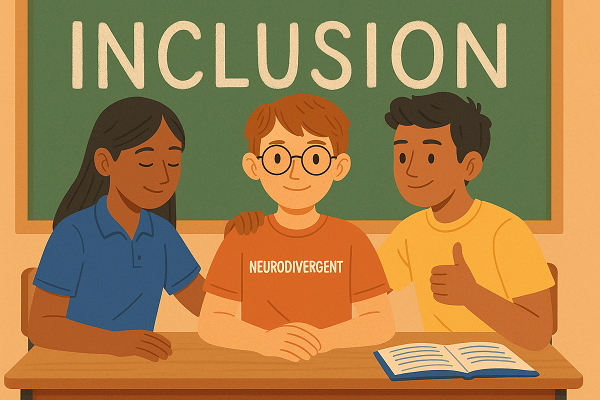
Aamir Khan’s recent film Sitaare Zameen Par has brought neurodiversity into the mainstream, and sparked important conversations about inclusion and rethinking what we consider ‘normal’. These cultural moments help raise awareness, but they also remind us that there is still a long way to go in making inclusion a lived reality.
It is estimated that 1 in 8 children in India have a neurodevelopmental condition such as ADHD, autism, learning disabilities and intellectual disability. Many of these children often face social isolation, bullying and exclusion – often the earliest of these experiences begin during school.
At the same time, today’s young people indeed carry with them a deep sense of social justice and openness to diversity. The energy, empathy and bold creativity of young people can be harnessed – if nurtured in the right way, at the right time – to make them equal partners in cultivating inclusive cultures in schools and communities.
We need young allies – people who are not only informed, but who engage meaningfully with neurodivergent peers, actively support the cause, and drive inclusivity. The key lies in equipping them with the knowledge, skills, and ultimately the mindset needed for inclusion. Schools must invest in nurturing young allies who can champion neurodiversity and take ownership of inclusion in spaces they belong to.
Our experience and work on youth allyship has shaped our understanding of what it takes to make this happen. Here are some of our most important insights:
- From awareness to active allyship: We need to move beyond awareness about neurodiversity, by equipping students with the knowledge, skills, confidence, and opportunities to take meaningful action as allies for neuro-inclusion.
- A personalised journey: Allyship is a lifelong journey which is most authentic when it grows organically from curiosity, dialogue, self-initiative and experiences. It cannot be imposed, and must be led by the individual.
- Student autonomy: When students have the autonomy to choose how they contribute, their commitment deepens. We should give students a mix of structure and freedom to help – guidance to shape their efforts, alongside the space to decide how they want to step up for meaningful change.
So how can schools nurture students as young allies?
- Create safe, relatable spaces led by students, for students Peer-led conversations give students space to reflect on diversity, challenge stereotypes, and share personal experiences. When peers lead, the power dynamics shift – students listen more openly, express without fear of judgment, and begin to see inclusion as something that belongs to them, not just a directive from authority figures. Our Inclusive Duniya Circles are one example of such spaces. Students are primed and empowered to sensitively facilitate conversations about disability, neurodiversity and inclusion.
- Explore connections to students’ interests and strengths
Students should be given the opportunity to discover how they feel about the cause and how they want to contribute. At the end of each Circle, we often ask, “How do you want to step up for an Inclusive Duniya?” The answers vary, but what matters most is that the initiative comes from the students themselves. Our role as adults and educators is to support them in making it happen.
Some take the route of advocacy – sparking conversations and campaigning for the cause with schoolmates. Others channel creativity through music, art, or theatre that challenges stereotypes.
For instance, the song Inclusive Duniya (available on Spotify), was written, composed and produced by students on their own from carefully crafting lyrics which invited listeners to imagine a world where everyone feels like they belong to picking melodies that convey warmth. Students used their creative talents to make a gentle but compelling call to action for allyship. Helping students tap into their personal strengths and interests enables authentic engagement and contribution to the cause.
- Embed into academic and co-curricular pathways
Linking students’ inclusion initiatives and projects to existing academic opportunities, such as CAS projects in the IB curriculum, allows them to merge personal passion with academic commitment. Framing these initiatives as co-curricular activities also strengthens students’ profiles for college applications. This dual recognition provides a formal recognition to their efforts and ensures students’ efforts are sustained – adding motivation, depth and commitment to their efforts.
The voices of young people not only impact their peers, but also have a ripple effect in shaping how families talk about disabilities, and, in due course, how communities and workplaces open themselves up to inclusion.
With the right support, our young generation can become a driving force for an inclusive world. Schools, as microcosms of society, provide the most conducive space for young people to explore sensitive concepts, question biases, and practice inclusion in meaningful ways. By nurturing young allies who truly value and celebrate diverse ways of thinking and being, we can lay the foundation for a more Inclusive Duniya.
This article is co-authored by:
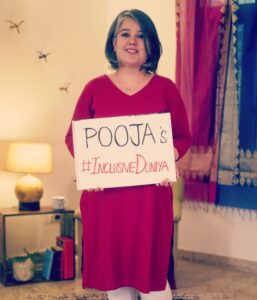
Pooja Sharma, Founder and CEO, Inclusive Duniya
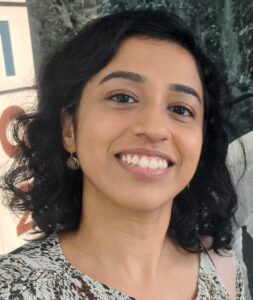
Srushti Patel, Manager- Schools Programme, Inclusive Duniya
Education
Ministry of Education Urges Schools to Adopt UPI for Digital Fee Payments, Promoting Ease of Schooling

Education
Supreme Court Calls for Early Sex Education in Schools: “Not from Class IX, But from a Younger Age”

In a landmark observation, the Supreme Court of India has emphasised the urgent need to introduce sex education at a younger age, rather than waiting until Class IX as is the current norm. The apex court stated that children should be informed and sensitised about the physical and emotional changes that accompany puberty — and taught the necessary care and caution that come with it.
The observation came from a Bench comprising Justice Sanjay Kumar and Justice Alok Aradhe, which noted that the absence of early sex education leaves children vulnerable to misinformation and misunderstanding during their formative years.
“Sex education should be provided to children from a younger age and not Class IX onwards. It is for the authorities concerned to apply their mind and take corrective measures so that children are informed of the changes that happen after puberty,” the court stated.
The Bench made the remarks while hearing an appeal filed by a 15-year-old boy, who had been denied bail by the Allahabad High Court in a case under Sections 376 and 506 of the Indian Penal Code (IPC) and Section 6 of the Protection of Children from Sexual Offences (POCSO) Act. Recognising that the accused was himself a minor, the Supreme Court had earlier granted him bail in September 2025.
In the same case, the Court had directed the Government of Uttar Pradesh to submit an affidavit explaining how sex education is currently implemented in schools. The state responded that sex education is introduced only in Classes IX to XII, following NCERT guidelines. However, the Bench expressed concern over this delayed introduction and urged policymakers to revisit the framework to ensure children receive age-appropriate education much earlier.
The Court set aside the High Court’s order and made the juvenile’s bail permanent until the completion of the trial. More importantly, its remarks have reignited the national debate on the need for comprehensive sexuality education in India, which many experts argue is crucial to preventing abuse, reducing stigma, and promoting healthy development among adolescents.
Education experts have long maintained that early, factual, and inclusive discussions about puberty, consent, and emotional health must begin before adolescence — ideally in primary school — to prepare children for real-world experiences and relationships. The Supreme Court’s observation is expected to prompt renewed policy discussions on revising the sex education curriculum nationwide.
Education
Delhi Government Launches Online First Aid Training Programme for Teachers

The Delhi government has introduced a new online training programme designed to equip teachers with essential first aid skills to respond effectively during health emergencies in schools.
According to a circular issued by the State Council of Educational Research and Training (SCERT), the course — titled “First Aid – To Improve Human Reaction in Challenging Health Situations” — will be conducted under the Massive Open Online Course (MOOC) format. The training is mandatory for all teachers and will run from October 9 to October 19, 2025.
The initiative aims to increase awareness about the importance of readiness in medical emergencies and the role of first aid in saving lives. It will also educate teachers on maintaining functional first aid kits in classrooms and demonstrate practical methods for administering care in real-life situations.
Teachers must achieve at least 70 per cent in each assessment to complete the course successfully. Upon completion, participants will receive certificates, which can be downloaded directly from the platform.
By introducing this online training, the Delhi government seeks to build a culture of preparedness and safety across schools. With thousands of teachers gaining basic emergency response skills, the initiative is expected to significantly improve the ability of schools to manage sudden health crises and ensure student well-being.
Education
Atal Innovation Mission and IFCCI Join Hands to Scale Up Atal Tinkering Labs Across India

The Atal Innovation Mission (AIM), NITI Aayog, and the Indo-French Chamber of Commerce & Industry (IFCCI) have signed a Statement of Intent (SoI) to strengthen and expand the Atal Tinkering Labs (ATLs) network across India. The agreement, formalised at the French Embassy in New Delhi during IFCCI’s 3rd CSR Connect Day 2025, marks a significant step in fostering STEM education, digital literacy, and innovation among school students.
The event was attended by H.E. Thierry Mathou, Ambassador of France to India, who praised the partnership for deepening Indo-French collaboration in social development. He highlighted that 2026 will mark the India–France Year of Innovation, encouraging businesses from both nations to invest in sustainable, community-driven impact initiatives through Corporate Social Responsibility (CSR).
Through this partnership, IFCCI and AIM aim to mobilise CSR contributions from French and Indian companies to improve infrastructure, enhance hands-on learning experiences, and bridge the gap between industry and education. IFCCI, which has already executed over 86 CSR projects benefiting more than 15,000 people across India, will leverage its network to support ATL expansion, particularly in underserved schools.
Mission Director of AIM, Deepak Bagla, noted that over 11 million students have already benefitted from the ATL initiative, which he called “one of the world’s largest grassroots innovation programs.” He said, “From the northernmost village school to the southernmost, innovation is thriving everywhere. The real story lies not in the scale, but in the creativity of the ideas students are building.”
A Shared Vision for Inclusive Innovation
The collaboration aims to make innovation accessible to all students by promoting digital tools, teacher training, and student challenges that inspire curiosity and problem-solving. IFCCI Director General Payal S. Kanwar added, “This partnership is a step forward in empowering youth with 21st-century skills. We aim to bridge the gap between industry and education and make innovation accessible to every student, especially in underserved regions.”
However, as the Atal Tinkering Labs expand, addressing operational challenges remains crucial. Reports by UNICEF and The New Indian Express underscore that access to digital tools alone cannot guarantee innovation without inclusive design, mentorship, and ethical technology use. UNICEF’s SPARK Labs model, which links creativity with social change, offers a useful reference — encouraging schools to blend innovation with empathy, inclusion, and purpose.
Challenges and Areas for Improvement
Despite the ATL program’s remarkable reach, a 2023 assessment highlighted several gaps. Nearly 58% of ATL teachers lack a STEM background or structured training, resulting in inconsistent mentorship. In many schools, ATL sessions are not integrated into the timetable, limiting daily engagement. Moreover, less than 10% of schools report active student participation due to limited guidance and parental scepticism about its academic value.
Operational hurdles like irregular funding, defective equipment, and poor monitoring systems have also hindered consistent performance. Some schools struggle to maintain labs once initial grants are exhausted, while others lack a mechanism to track outcomes effectively.
The Way Forward
For the AIM–IFCCI partnership to achieve its full potential, a few key steps can strengthen impact:
-
Teacher Capacity Building: Introduce regular certification-based training programs, preferably in collaboration with universities and tech firms.
-
Curriculum Integration: Embed ATL projects within school timetables and link them with existing subjects like science and mathematics.
-
Mentorship Networks: Connect schools with local innovators, start-ups, and CSR professionals for year-round engagement.
-
Monitoring Systems: Deploy digital dashboards to track participation, tool usage, and project outcomes for better transparency.
-
Community Awareness: Conduct parent and community outreach sessions to showcase how tinkering enhances academic learning and future employability.
If executed effectively, this Indo-French collaboration can redefine India’s innovation ecosystem by turning every school into a space where curiosity meets creation. The challenge now lies in ensuring that every student, regardless of background, not only has access to a lab but also the guidance and confidence to build something meaningful within it.
Education
Ministry of Education to Promote Clean and Vibrant School Environments
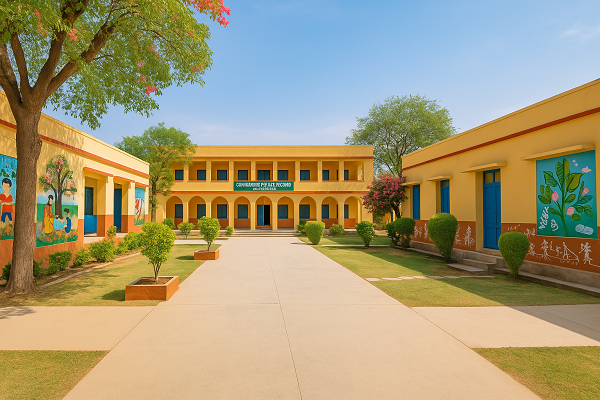
The Ministry of Education’s Department of School Education and Literacy (DoSEL) has joined the Government of India’s Special Campaign 5.0, running from 2nd to 31st October 2025. The campaign focuses on institutionalising cleanliness (Swachhata), improving efficiency in governance, and enhancing the physical environment of schools across India.
A key goal of the campaign is to ensure that schools provide a clean, safe, and engaging atmosphere for students. States and Union Territories have been encouraged to carry out whitewashing, repainting, and minor repairs such as maintaining functional toilets, fixing flooring, and replastering walls. Refurbishing name boards, reclaiming unused spaces, and improving campus aesthetics are also part of the drive.
To make school environments more vibrant, schools are being encouraged to create murals and wall art inspired by traditional Indian art forms such as Madhubani, Kalamkari, and Warli. These creative efforts will not only beautify campuses but also serve as Building as Learning Aid (BaLA) resources, helping students connect with India’s cultural heritage.
Community involvement forms a central part of Special Campaign 5.0. The Ministry is encouraging schools to involve alumni and local communities through the Vidyanjali platform — a DoSEL initiative that connects volunteers and supporters with government and aided schools. Panchayati Raj Institutions are also being engaged to help local schools upgrade and maintain their infrastructure.
Beyond school-level improvements, the campaign also aims to enhance efficiency in governance. Government offices are reviewing, categorising, and clearing obsolete physical and digital records, while systematically indexing and digitising important files. This process is expected to declutter offices, optimise space, and improve workflow management.
The Department of School Education and Literacy is coordinating with all stakeholders to make cleanliness, participation, and efficiency integral to school operations. The Ministry envisions the campaign as a step towards creating cleaner campuses, more efficient systems, and a stronger sense of ownership within the education ecosystem.
-

 Education3 months ago
Education3 months agoNCERT Launches New Class 5 & 8 Textbooks, Makes Art Education Mandatory
-
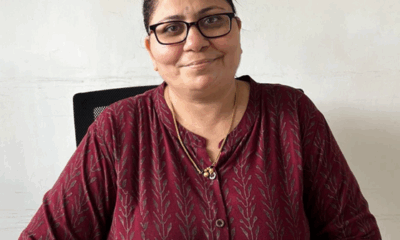
 Education3 months ago
Education3 months agoIn Every Smile, a Victory – Sandhya Ukkalkar’s Journey with Jai Vakeel’s Autism Centre
-
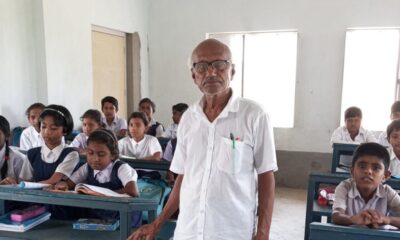
 Education3 months ago
Education3 months agoThe Man Who Called His Students Gods: Dwijendranath Ghosh
-
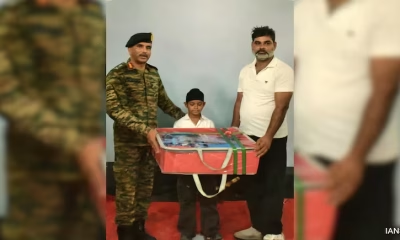
 Education3 months ago
Education3 months agoIndian Army to Sponsor Education of 10-Year-Old Who Aided Troops During Operation Sindoor
-
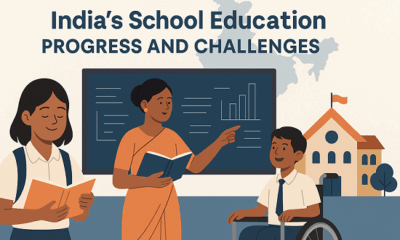
 Education2 months ago
Education2 months agoBeyond the Numbers: Reading Between the Lines of UDISE+ 2024–25
-
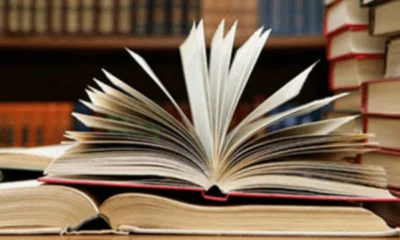
 Education3 months ago
Education3 months agoNCERT’s New Class 8 History Textbook Addresses “Darker Periods”, Highlights Religious Intolerance and Resilience
-

 Edutainment2 months ago
Edutainment2 months agoWeaving Social-Emotional Learning into the Curriculum
-
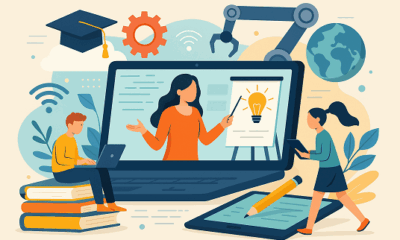
 Education2 months ago
Education2 months agoEducation with Purpose: Shaping Responsible Learners for a Better Tomorrow
-

 Education2 months ago
Education2 months agoEducate Girls Becomes First Indian NGO to Win the Ramon Magsaysay Award
-
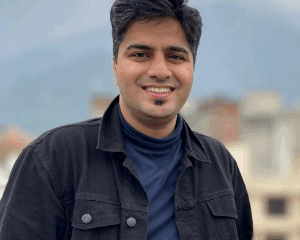
 Education3 months ago
Education3 months agoA School Without Walls: The Pehchaan Story, Led by Akash Tandon





